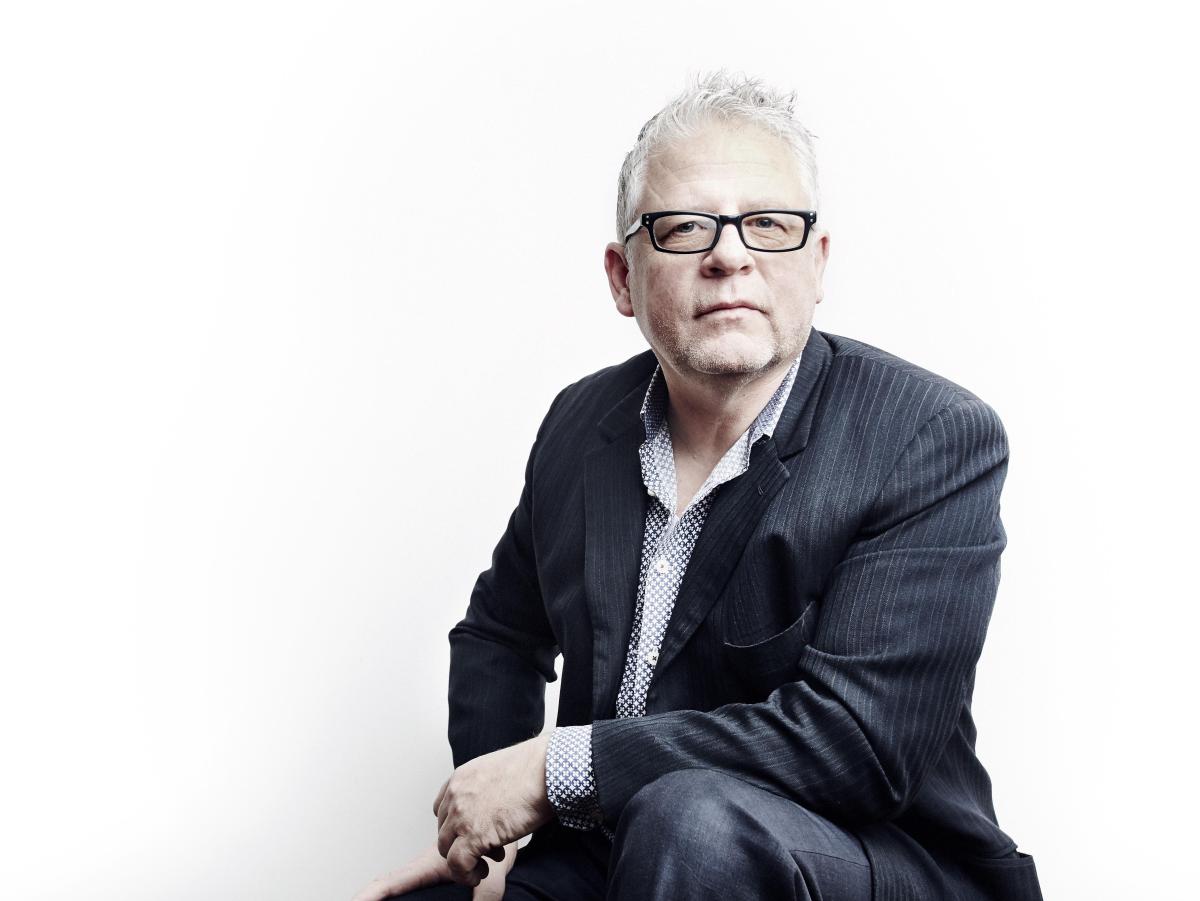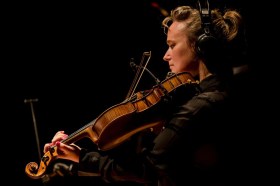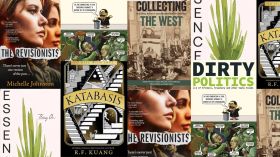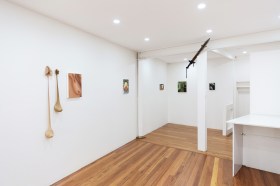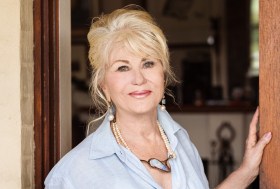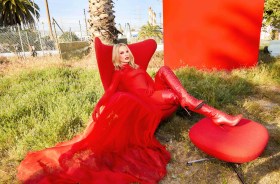Andy Miller, photograph by Gary Gross
Elections are a bruising business. The analysis of the 2019 one shows that Australians appear split on many issues and along the lines of education, class and religion. People are more calcified in their views and an increasing number are putting their faith in independents, single-issue parties and those on the far left and right. We are a diverse and yet divided country. What can be done?
Imagine, if you will, a political epiphany – our leaders suddenly attentive to the potential of culture and creativity to bring us closer together. With an enthusiastic new minister recognising the ‘profound contribution of our creative sector to our national identity’, perhaps we have an advocate for increased political support for cultural activity across a range of settings – a bold national vision for culture and creativity?
Culture is an essential public good. It is about expressing our humanity. Through creative pursuits we explore our differences and our commonalities and increase mutual understanding. We are all human, we all fear, we all hurt, we all love, we all want to learn, we all want to belong, we all want to experience joy and we all aspire to something.
Australia’s creative ecosystem is an integrated collection of component parts. A mix of private and commercial as well as publicly funded, community, media and not-for-profit participants of varying scale. It incorporates disciplines ranging from dance to design, from fashion festivals to filmmaking, from gaming to galleries – the underpinning factors being the inherent opportunities for innovation, creative expression, social connection and a sense of belonging to an imaginative and resourceful society.
At the national level, public support for culture, creativity and the arts has been varied. Over the years, the cultural policy needle has wandered from an emphasis on the creative industries towards the ‘traditional’ arts. Fifty-two years ago, Liberal Prime Minister, Harold Holt established the Australia Council as an arms-length body for public funding of the arts. Twenty-five years ago, Labor Prime Minister Paul Keating launched Australia’s first cultural policy, Creative Nation, an ambitious plan for its time that inscribed culture as central to our national identity and economy – placing cultural diversity and Indigenous cultures at its core. Importantly, it changed the way we viewed ourselves and projected us internationally as a more sophisticated and less inward-looking nation. However, it’s policy successor, Creative Australia, developed under the Gillard Government and refloated under Bill Shorten’s leadership, never came up for air.
Our First Nations are central to our diverse society
Whatever your political persuasion, it would be hard not to perceive the countless diplomatic, cultural and economic benefits that arise from Australia’s Indigenous cultures. All of us have profited considerably from the growing global interest in our historical and contemporary First Nations’ arts and cultural practices. We cannot expect full recognition of our First Nations until they are at least included in our constitution. What is critical into the future, if we are to project ourselves as a confident nation with an ancient history and an appreciation for dynamic contemporary arts, is that the integrity of First Nations cultural practice and material needs to be maintained and promoted along with the protection of the rights of the creators and custodians.
Our diverse communities are our greatest cultural asset
At least as important as economic aspiration in a democratic society, is taking into account the tangible opportunities available to all individuals and communities to participate in and benefit from a creative society. We are a multicultural nation – it’s not an ideal, it’s a fact. Recognising the importance of culture is critical in forming international relationships and in the successful settlement of new migrant communities. Cultural participation is good for democracy and the Federal Government recognises the value of our diverse cultures in accord with the UNESCO Declaration of Universal Human Rights and the Convention on the Protection and Promotion of the Diversity of Cultural Expressions. Our right to openly express ourselves is fundamental to our democracy and increasingly important in the face of cultural and religious intolerance, xenophobia and isolationism – a counter-productive atmosphere of suspicion and fear.
It follows that in a multicultural society, diversity should be central to all facets of Federal Government-funded cultural activity. But it’s not. Arts as a career option remains the domain of the white middle-class. 50% of us were born overseas or have a parent who was born overseas and yet artists from non-English speaking backgrounds comprise only 10% of professional artists in the country and draw significantly less income from their practice than their peers from English-speaking backgrounds. Artists with disability earn less than half that of other artists.
The bulk of arts funding goes, uncontested, to the major performing arts organisations, whose audiences are in the main affluent and white. How cultural funding is devolved needs an accompanying equity framework that challenges the prevailing structures of power and privilege and addresses the ‘closed loop’ of professional and content development that currently dominates the sector. Most individuals from diverse communities, people with a disability and people living in disadvantaged areas do not see publicly funded arts institutions as relevant to their lives. The arts are not a viable career path and our diverse communities are profoundly underrepresented on our stages and screens.
Federal Government administration needs to connect more meaningfully with these groups around culture. One-off schemes to engage can be tokenistic, unfairly raise expectation and do little to challenge systems, behaviours and attitudes that exclude many from engaging in the arts, and unlike the US, we cannot rely on the private sector or philanthropy for enduring support in this area.
Some of the obstacles to be overcome include funding short-term outcomes over long-term community benefit, charging unaffordable rates for the use of public infrastructure, and devising codified and impenetrable funding programs that admit only the initiated. Creative New Zealand, for example puts ‘stronger arts communities’ at the very top of its Strategic Intent document. How welcome it would be for governments in Australia to reach a similar understanding of the cultural values and functioning of our diverse communities.
Taking a three-tiers approach
Imagine new spheres of public engagement that recognise and promote new forms of cultural expression. What’s needed is the provision of structured opportunities for our diverse artists and cultural leaders to improve capabilities and capacity over time. Yet currently there are few leaders, managers and producers employed that hold the cultural knowledge necessary to drive this change. As things currently stand, this is the difficult bit. This necessitates a three-tiers of government (Local, State and Federal) conversation about leadership and ways we can work beyond conventional practices. To advance cultural democracy and reach full participation in a creative, healthy and prosperous society, our governments should not shy away from this challenge and not skimp on the resources required to make this happen. Let’s not allow diversity to amount to a few ‘tack-on’ cultural festivals.
We need a cross-government commitment to recognise the value and potential of diverse artists, communities and our diasporic relationships.
As the grass-roots tier holding a large percentage of the country’s cultural infrastructure, it is essential to recognise the role of local government as integral to the increase of creative capacity and improved diversity across the country. Councils often struggle to apply enough resources to deeply engage with their respective diverse communities. An analysis of how our local performing arts centres, public galleries and council arts programs are structured, governed and staffed will give you an indication of how much further we need to go to realise content and participation that reflects our diversity. Council arts managers are preoccupied with a bump-in-bump-out approach to program delivery. They are under pressure to maintain a balanced bottom line for culture and therefore see risk in diverse programming. The touring programs currently on offer from state to state are saturated with nostalgia pieces and tribute bands. There is a real risk of the current arts delivery model atrophying with so much original talent lying dormant. Again, a three-tiered strategic approach is needed to address this long-standing gap with longer-term and reliable resources applied to enable public cultural organisations to increase engagement, capacity and content in collaboration with our many diverse artists and communities across the country.
Education and training
A critical future-proofing plank in this approach is education and training. While there is currently some support for arts training institutions (Australian National Academy of Music; National Institute of Dramatic Art; Flying Fruit Fly Circus; Australian Ballet School; Australian Film, Television and Radio School; Australian Youth Orchestra; National Institute of Circus Arts etc.) there is also significant potential in partnering with the broader education and training sector to ensure creativity is valued in society. The curricula in secondary and tertiary institutions could incorporate a whole range of arts disciplines in their teaching of non-arts subjects. How about engaging the TAFE network in training future artists? Or revisiting the excellent community entrepreneurship model, the Centre for Cultural Partnerships-VCA (a dedicated centre for community and socially engaged arts practice)? Or extending artist residency programs across all primary and secondary schools (e.g. Victoria’s successful Creative Learning Partnership program)? All of these affordable initiatives would ensure a more considered and sustainable investment in the value of creativity, leadership and careers.
Finding cultural solutions
Politicians of many persuasions and portfolios refer to the instrumental benefits of the arts, though, often through lack of effective coordination across portfolios, respective plans and budgets are rarely applied in ways that result in lasting positive change to complex social issues. The Australia Council’s recent and welcome Strategy 2020-2024 Discussion Paper acknowledges the impact of arts and culture on our wellbeing and happiness, the value of social cohesion, and the powerful role of the arts in generating empathy, understanding and human connection. The current State Government in Victoria is a few steps ahead in applying ‘cultural solutions’ to wider community concerns (including education, mental health, physical wellbeing, corrections, social cohesion etc.). In applying cultural solutions to social issues, cross-sector partnerships between agencies and areas of government need to be encouraged. History shows us, however, that to achieve real positive change in our society, collaborative schemes can’t afford to tinker at the margins at the expense of long-term and productive engagement.
In order to maximise our collective cultural, social and economic potential, Australia needs a robust and relevant cultural policy platform. We need to boost our national self-esteem and put creativity at the centre of all affairs. Such an ambition – cognisant of all the necessary working parts that comprise our creative ecosystem – requires a broad vision, a ‘big heart’ and a set of well-formed and enduring relationships. It will need cross-party, inter-departmental, inter-government, and inter-agency commitment at the highest level, with long-range strategic planning, deep consultation and a sincere multi-year funding commitment to carry this off.
If the Minister is willing to rise to the challenge, I am sure he would find encouragement in all sorts of surprising places.

